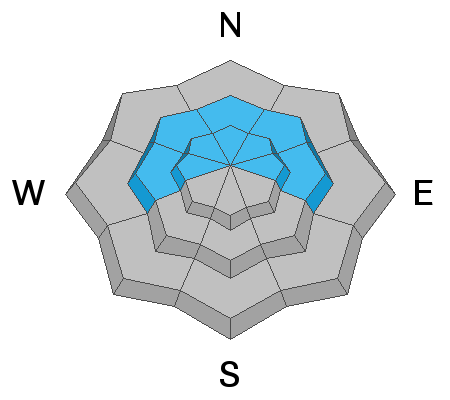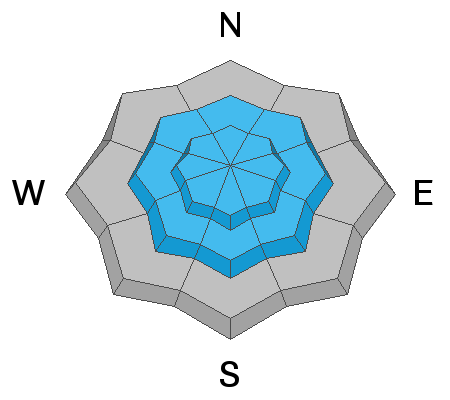Forecast for the Salt Lake Area Mountains

Issued by Nikki Champion on
Thursday morning, December 30, 2021
Thursday morning, December 30, 2021
The avalanche danger is HIGH on upper elevation aspects facing northwest through north and east, where strong winds and recent snowfall have created dangerous avalanche conditions. Upper elevation aspects facing west and mid-elevation aspects facing west through north through east - have a CONSIDERABLE danger. Natural and human-triggered avalanches are likely. Any natural or human-triggered avalanche can be 2-6' deep, over a few hundred feet wide, and likely unsurvivable.
Pay attention to changing weather patterns, as this storm intensifies avalanche danger will rapidly rise.
Traveling on, underneath, or adjacent to slopes steeper than 30° at the upper elevations is not recommended. Fortunately, there are excellent riding conditions on lower-angled slopes outside of wind-affected terrain.
Traveling on, underneath, or adjacent to slopes steeper than 30° at the upper elevations is not recommended. Fortunately, there are excellent riding conditions on lower-angled slopes outside of wind-affected terrain.

Low
Moderate
Considerable
High
Extreme
Learn how to read the forecast here








